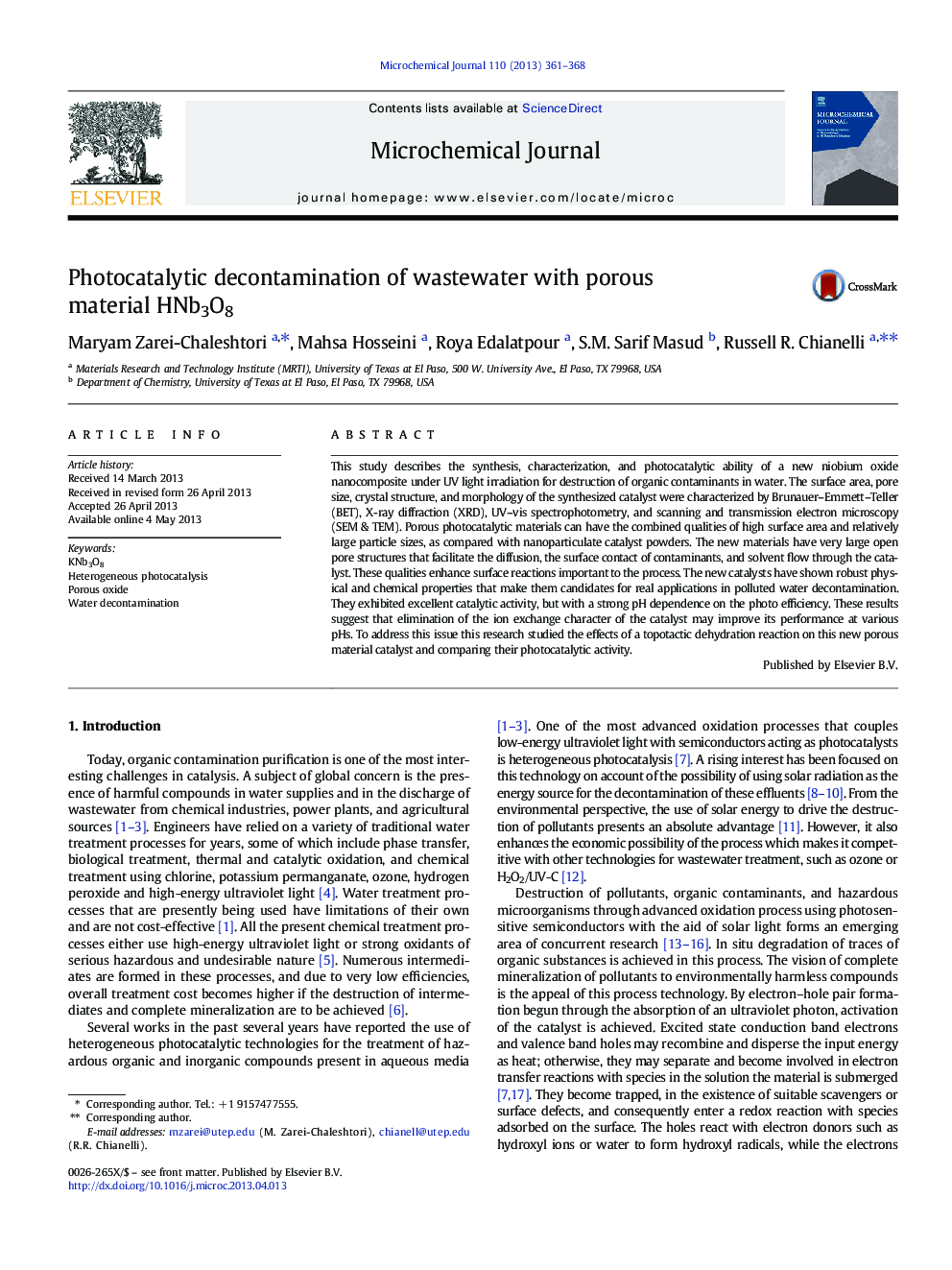| Article ID | Journal | Published Year | Pages | File Type |
|---|---|---|---|---|
| 7643869 | Microchemical Journal | 2013 | 8 Pages |
Abstract
This study describes the synthesis, characterization, and photocatalytic ability of a new niobium oxide nanocomposite under UV light irradiation for destruction of organic contaminants in water. The surface area, pore size, crystal structure, and morphology of the synthesized catalyst were characterized by Brunauer-Emmett-Teller (BET), X-ray diffraction (XRD), UV-vis spectrophotometry, and scanning and transmission electron microscopy (SEM & TEM). Porous photocatalytic materials can have the combined qualities of high surface area and relatively large particle sizes, as compared with nanoparticulate catalyst powders. The new materials have very large open pore structures that facilitate the diffusion, the surface contact of contaminants, and solvent flow through the catalyst. These qualities enhance surface reactions important to the process. The new catalysts have shown robust physical and chemical properties that make them candidates for real applications in polluted water decontamination. They exhibited excellent catalytic activity, but with a strong pH dependence on the photo efficiency. These results suggest that elimination of the ion exchange character of the catalyst may improve its performance at various pHs. To address this issue this research studied the effects of a topotactic dehydration reaction on this new porous material catalyst and comparing their photocatalytic activity.
Related Topics
Physical Sciences and Engineering
Chemistry
Analytical Chemistry
Authors
Maryam Zarei-Chaleshtori, Mahsa Hosseini, Roya Edalatpour, S.M. Sarif Masud, Russell R. Chianelli,
